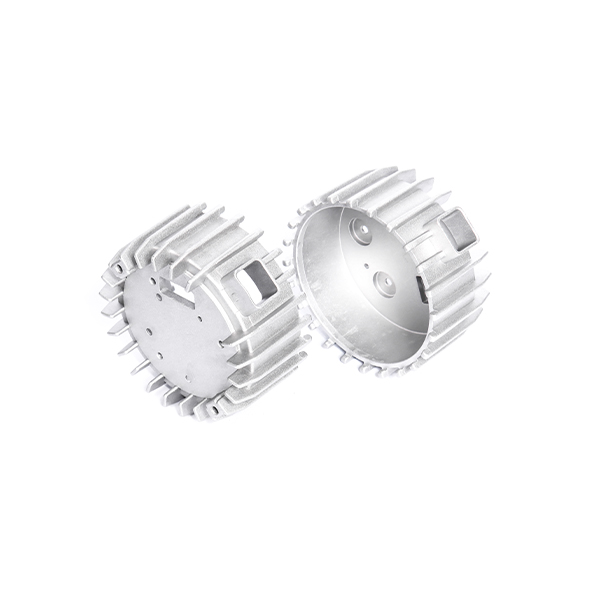Mobile:+86-311-808-126-83
Email:info@ydcastings.com
High-Quality Stainless Steel 316 Casting for Superior Durability and Corrosion Resistance
The Versatility and Applications of Stainless Steel 316 Casting
Stainless steel 316, recognized for its exceptional corrosion resistance and durability, has become a prominent choice in various industries. Its casting process, integral to manufacturing components, allows for the creation of complex shapes and structures that meet the demands of modern engineering. This article explores the properties, advantages, and applications of stainless steel 316 casting in various sectors.
Understanding Stainless Steel 316
Stainless steel 316 is an austenitic alloy primarily composed of iron, chromium, and nickel, with molybdenum added to enhance its corrosion resistance. The molybdenum content provides increased resistance to pitting and crevice corrosion in chloride environments, making 316 stainless steel superior to other grades like 304 in marine surroundings and acidic conditions. Its high-temperature strength and ease of fabrication further contribute to its widespread use.
Casting Process of Stainless Steel 316
The casting process of stainless steel 316 involves melting the alloy and pouring it into molds to create specific shapes. Common casting methods include investment casting, sand casting, and die casting. Investment casting, in particular, is favored for its ability to produce intricate and detailed components with a smooth finish. The precision of this technique minimizes the need for further machining, which saves time and costs in production.
Advantages of Stainless Steel 316 Casting
1. Corrosion Resistance One of the most significant advantages of stainless steel 316 casting is its excellent resistance to corrosion. This makes it suitable for environments exposed to saltwater, acids, and various chemicals. Industries such as marine, chemical processing, and medical benefit immensely from this property.
2. Strength and Durability Stainless steel 316 possesses remarkable tensile strength, making it suitable for high-stress applications. The durability of cast components ensures a longer lifespan and reduced maintenance needs, which is economically advantageous for businesses.
3. Versatility The ability to cast stainless steel 316 into various shapes and forms allows for versatile applications. Industries such as aerospace, automotive, and construction utilize castings for parts that require both functionality and aesthetic appeal.
stainless steel 316 casting

4. Biocompatibility The non-reactive nature of stainless steel 316 makes it an ideal material in medical applications, such as surgical instruments and implants. Its resistance to bacterial colonization enhances safety in healthcare environments.
Applications of Stainless Steel 316 Casting
Stainless steel 316 casting finds applications in numerous sectors, reflecting its adaptability and functionality.
- Marine Industry Components such as valve bodies, pump housings, and boat fittings require materials that withstand harsh seawater conditions. The corrosion resistance of 316 makes it a preferred choice.
- Chemical Processing Equipment used in chemical plants, including reaction vessels, heat exchangers, and piping, benefits from 316’s ability to resist corrosive substances, ensuring operational integrity and safety.
- Food and Beverage In food processing and beverage production, hygiene is paramount. Cast stainless steel 316 components are used in processing equipment, valves, and storage tanks, meeting strict sanitary standards.
- Medical Devices The biocompatibility and ease of sterilization of stainless steel 316 make it an ideal material for surgical tools, implants, and prosthetics.
- Aerospace The aerospace industry utilizes stainless steel 316 castings for structural components that require high strength-to-weight ratios, particularly in environments subject to extreme temperatures and stresses.
Conclusion
The casting of stainless steel 316 presents a myriad of benefits that cater to different industries’ needs. Its outstanding corrosion resistance, strength, and versatility make it a go-to material in demanding applications. As technology continues to advance, the methods of casting and the range of applications for stainless steel 316 will undoubtedly expand, making it an enduring choice for engineers and manufacturers around the world.
-
Why Should You Invest in Superior Pump Castings for Your Equipment?NewsJun.09,2025
-
Unlock Performance Potential with Stainless Impellers and Aluminum End CapsNewsJun.09,2025
-
Revolutionize Your Machinery with Superior Cast Iron and Aluminum ComponentsNewsJun.09,2025
-
Revolutionize Fluid Dynamics with Premium Pump ComponentsNewsJun.09,2025
-
Optimizing Industrial Systems with Essential Valve ComponentsNewsJun.09,2025
-
Elevate Grid Efficiency with High-Precision Power CastingsNewsJun.09,2025











